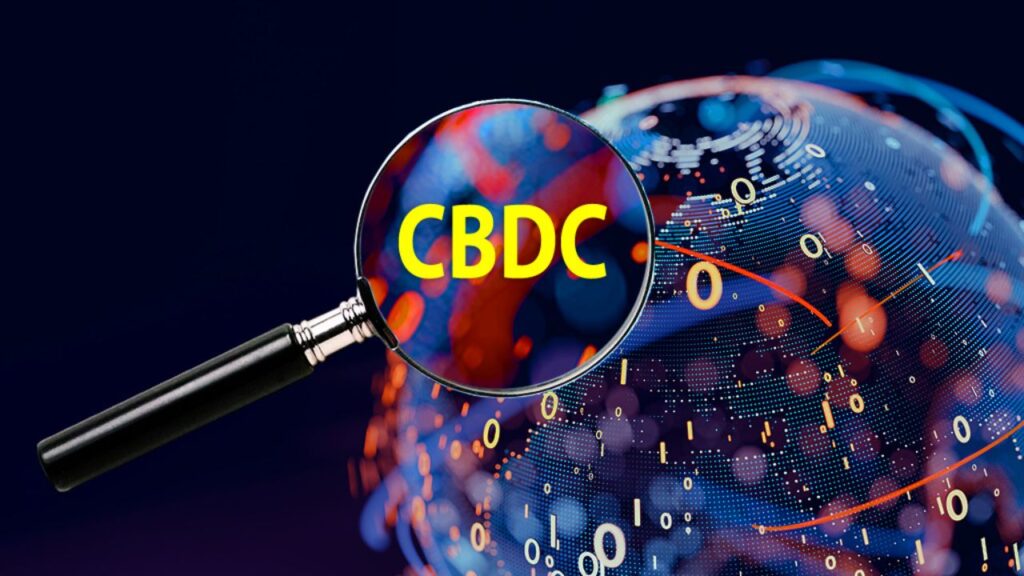The crypto currency landscape is evolving at an unprecedented pace, bringing innovation, disruption, and transformation to the global financial ecosystem. With 2025 well underway, the industry is witnessing pivotal trends that are shaping the future of digital assets. Whether you’re an investor, enthusiast, or just curious, understanding these trends can help you stay ahead of the curve. Let’s dive into the top five cryptocurrency trends to watch in 2025.

1. The Rise of Central Bank Digital Currencies (CBDCs)
Central Bank Digital Currencies (CBDCs) are no longer just theoretical concepts. In 2025, several countries are launching or expanding their CBDC initiatives, aiming to modernize their financial systems. Nations like China, India, and the European Union are leading the charge, while others are conducting pilot programs to explore the potential of digital fiat currencies.
Why Are CBDCs Important?
CBDCs aim to provide the benefits of cryptocurrencies like Bitcoin and Ethereum while retaining the trust and stability associated with traditional fiat currencies. They offer:
- Faster and cheaper cross-border transactions.
- Enhanced financial inclusion for unbanked populations.
- Improved monetary policy implementation and transparency.
For instance, China’s digital yuan, which has been in development for years, is now widely used in domestic and international transactions. Similarly, the European Central Bank is progressing with its digital euro project, emphasizing privacy and efficiency.
What Does This Mean for Cryptocurrencies?
The rise of CBDCs may pose competition to decentralized currencies. However, it also validates the broader concept of digital assets, pushing mainstream adoption. The coexistence of CBDCs and cryptocurrencies is likely to create a more diverse financial landscape.
2. DeFi 2.0: The Next Evolution of Decentralized Finance
Decentralized Finance (DeFi) has been a game-changer, democratizing access to financial services. In 2025, DeFi is entering its next phase, often referred to as DeFi 2.0. This evolution focuses on addressing the limitations of early DeFi protocols, such as scalability, security, and sustainability.
Key Innovations in DeFi 2.0
- Layer 2 Solutions: Technologies like Optimistic Rollups and zk-Rollups are improving scalability by enabling faster and cheaper transactions on Ethereum and other blockchains.
- Interoperability: Cross-chain solutions are allowing seamless interaction between different blockchain networks, reducing fragmentation.
- Sustainability: Enhanced tokenomics and governance models are making DeFi protocols more sustainable in the long run.
Real-World Use Cases
DeFi 2.0 is enabling innovative use cases like:
- Decentralized insurance platforms for protecting against risks.
- Yield farming strategies that are more accessible and less risky.
- Real-world asset tokenization, such as tokenized real estate or commodities.
As DeFi continues to mature, it’s attracting institutional investors and regulatory scrutiny, further cementing its role in the financial ecosystem.

3. The Expansion of NFTs Beyond Art
Non-Fungible Tokens (NFTs) took the world by storm with digital art and collectibles, but in 2025, their applications are expanding far beyond art. NFTs are now integral to various industries, including gaming, fashion, real estate, and intellectual property.
Emerging NFT Use Cases
- Gaming: Play-to-earn (P2E) games are creating new revenue streams for players by integrating NFTs as in-game assets.
- Fashion: Luxury brands are using NFTs for digital fashion items and exclusive membership perks.
- Real Estate: Property ownership and leasing are being tokenized through NFTs, enabling fractional ownership and simplified transactions.
- Music and Entertainment: Artists and creators are leveraging NFTs to monetize their work directly, bypassing intermediaries.
NFT Market Trends
In 2025, NFTs are becoming more utility-driven. Projects are focusing on building communities and providing tangible benefits to holders, such as access to events, discounts, or exclusive content. Moreover, eco-friendly NFTs are gaining traction, leveraging energy-efficient blockchains like Solana and Tezos.
4. Green Cryptocurrencies and Sustainability Initiatives
The environmental impact of cryptocurrencies has been a hot topic, especially with Bitcoin’s energy-intensive proof-of-work (PoW) mechanism. In response, 2025 is seeing a surge in green cryptocurrencies and sustainability initiatives across the ecosystem.
Eco-Friendly Blockchain Solutions
- Proof-of-Stake (PoS): Ethereum’s transition to Ethereum 2.0, a PoS consensus mechanism, significantly reduced its energy consumption. Other PoS-based blockchains, like Cardano and Polkadot, are gaining traction for their eco-friendliness.
- Carbon Offset Programs: Some crypto projects are offsetting their carbon footprint by investing in renewable energy and reforestation programs.
Green Coins to Watch
Cryptocurrencies like Chia, Nano, and Algorand are leading the charge with sustainable practices and low energy consumption. These projects are redefining the narrative around crypto’s environmental impact.
Why It Matters
As governments and organizations prioritize sustainability, green cryptocurrencies are likely to attract more investment and adoption. Environmental considerations are becoming a competitive advantage in the crypto space.

5. Regulatory Developments and Institutional Adoption
Regulation is a double-edged sword for the crypto industry. While excessive regulation can stifle innovation, clear and fair rules can boost confidence and attract institutional players. In 2025, regulatory clarity is emerging as a key trend, alongside increased institutional adoption.
Global Regulatory Landscape
- United States: The SEC and CFTC are collaborating to define clear guidelines for cryptocurrencies, focusing on consumer protection and market stability.
- Europe: The Markets in Crypto-Assets (MiCA) regulation is setting a comprehensive framework for crypto operations within the European Union.
- Asia: Countries like Japan and Singapore are creating crypto-friendly environments with balanced regulations.
Institutional Adoption
Institutions are embracing cryptocurrencies as a legitimate asset class. In 2025, we’re seeing:
- Major corporations integrating blockchain technology for supply chain management and payments.
- Asset managers offering crypto-focused investment products, such as ETFs and mutual funds.
- Increased participation in crypto staking and DeFi by traditional financial institutions.
What’s Driving Adoption?
The growing acceptance of cryptocurrencies as a hedge against inflation, along with advancements in custody solutions, is making it easier for institutions to enter the market. Additionally, regulatory clarity is reducing the risks associated with crypto investments.
Conclusion:
The cryptocurrency industry in 2025 is brimming with potential, innovation, and challenges. From the rise of CBDCs and DeFi 2.0 to the expansion of NFTs and the push for sustainability, these trends are reshaping the way we interact with money, assets, and technology. While the journey is unpredictable, one thing is certain: cryptocurrencies are here to stay and will continue to influence the global financial landscape.
Whether you’re a seasoned investor or a curious observer, staying informed about these trends will help you navigate the dynamic world of crypto. The future is digital, and it’s unfolding right before our eyes.


